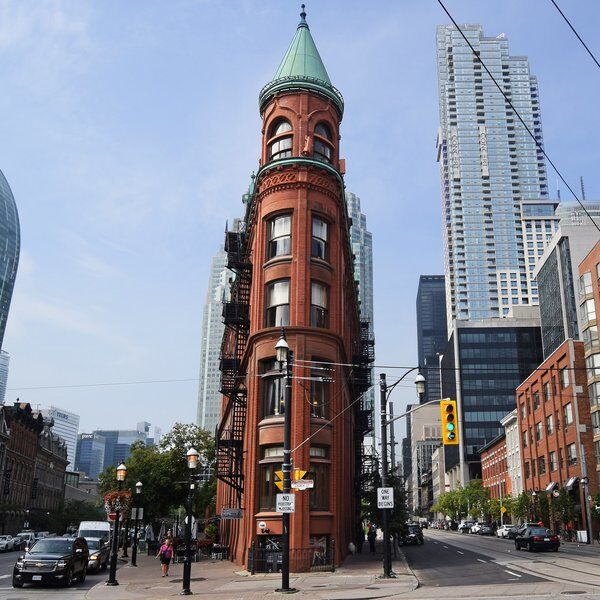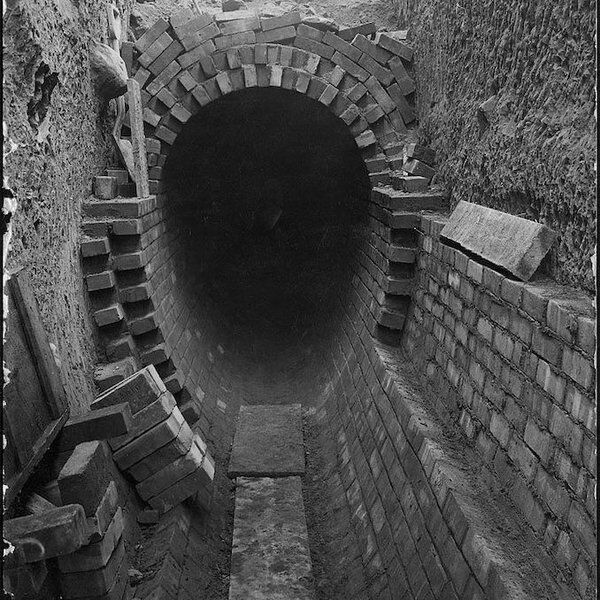Discover the Smallest House in Toronto
Toronto may be known for its towering landmarks like the CN Tower and the Gooderham Building, and its widespread residential neighborhoods, but tucked away in its west end lies the beloved, Smallest House in Toronto. In stark contrast to the modern condos surrounding it the so-called "Little House" is quite literally a tiny house, which owes its existence to an oversight in early 20th-century city planning.
Today, the house is a quirky attraction for those interested in unusual architecture or the history of Toronto’s development. While the house is privately owned, its exterior remains a popular sight for curious passersby. Its fame has spread beyond the local area, and the house has been featured in various media outlets—it's a small house with a big fan base!

How Did Toronto’s Little House Come to Be?
Origins of the Little House
The story of the smallest house in Toronto begins in 1912, when a local contractor, Arthur Weeden, took notice of a small, unused lot on Day Avenue. Originally intended as a laneway between two existing houses, the lot had been left unused because the City of Toronto never lowered the curb to allow for vehicle access. Recognizing the lot’s potential, Weeden decided to construct a full residential house on the narrow space, which later became known as Toronto's Little House.
Arthur Weeden: From England to Toronto
Born in England, Arthur Weeden immigrated to Canada in 1902. He initially worked as the superintendent of the old Lighthouse Mission in Toronto, but soon became a builder in the city’s west end, particularly in the Earlscourt district, now St. Clair West Village. Day Avenue, where Toronto’s Little House is located, is home to many of Weeden’s building projects, showcasing his influence as a pioneer developer in the area.
Life in the Little House
After completing the home, Weeden and his wife moved into the tiny residence, where they lived together for 20 years. Following her passing, Weeden continued to reside there for six more years. During this time, he maintained a small vegetable garden in the backyard, where he grew tomatoes, cabbages, Swiss chard, rhubarb, and other produce. His commitment to making the most of the small space highlights his resourcefulness as both a builder and a homeowner.
The Challenge of Being the Smallest House in Toronto
Over the years, Weeden’s Little House became a local curiosity, often compared to other small homes in the area. At the time, a house on Sydenham Street was believed to be smaller, but Weeden was quick to correct the record, noting that his house had the smallest frontage and more modern amenities. Another contender, located at 383 Shuter Street, was also larger by eight inches, solidifying the Little House's claim to fame as Toronto’s smallest house.
Renovations and Modern Attention
Over the years, the house has seen various owners, including a Brazilian family of four who managed to call this tiny abode their home for a full decade. The most recent significant renovation occurred in 2007, when new owners purchased the property for $135,000 and revamped the interior to maximize the limited space.
This renovation made the home both functional and aesthetically pleasing and earned the Little House international fame, culminating in a feature on The Ellen Show in 2008. It was this widespread media attention that brought the Smallest House in Toronto to the attention of the world and in 2015, to an English singer-songwriter, Maria Lee Carta who stumbled upon Toronto’s Little House through a forwarded email and was inspired to write a song titled “Come Back to Me”. Have you heard of it?
Despite its small size, the home has continued to attract interest, particularly in a city where real estate prices have soared. In recent years, similar tiny homes have entered the market, but few have captured the public’s imagination like the smallest house in the city.

What is it like Inside the Smallest House in Toronto?
Compact and Efficient Design
The Smallest House in Toronto is a narrow but efficient structure measuring only 7 feet wide and 47 feet deep, with a total living space of just under 300 square feet. The main floor contains a living room, a kitchen, and a small sleeping area, all arranged for optimal use of the available space. The home’s clever use of multifunctional furniture, like the Murphy bed that folds up to free space when not in use, ensures the Little House has everything one might need for comfortable living.
The kitchen is particularly well thought out, with foldable tables and chairs that can be stowed away when not in use. There is also a hatch that leads to a tiny basement, offering additional storage options. This detail highlights the ingenuity behind the home’s design, making the most of every square foot..
Outdoor Space
Another unexpected feature of the Smallest House in Toronto and one that might stir a bit of neighborly envy, is the backyard. In contrast to modern condo living in Toronto, where outdoor space is often limited, the smallest house has a tiny backyard where residents can enjoy fresh air and a bit of greenery. This outdoor space provides a peaceful retreat, perfect for enjoying a morning coffee or tending to a tiny garden.
Visiting the Smallest House in Toronto
Location and Neighborhood
The smallest house in Toronto is located near Dufferin and Rogers Road in St. Clair West Village. While the house is privately owned and not open for public tours, visitors often pass by to catch a glimpse of this architectural curiosity. And if you’re thinking “if it's so small maybe I’ll miss it”, we can guarantee that you won’t! Its uniquely petite and extreme dimensions and well-maintained exterior, make it impossible to miss when walking down the street, despite being flanked by much larger homes.
Practical Considerations for Visitors
Although visitors cannot tour the interior without the owner’s permission, the house’s exterior is still worth a viewing. The narrowness of the house, combined with its endearing façade, makes it an excellent stop for photographs and a brief history lesson. Visitors can stroll down Day Avenue to experience a unique piece of Toronto’s architectural landscape and imagine what it might be like to live in the smallest house in the city.
Explore Beyond the Smallest House in Toronto with CityDays
While the Smallest House in Toronto offers a quirky snapshot of the city’s history, there’s much more to explore across Toronto—and beyond. CityDays offers scavenger and treasure hunt tours designed to help you uncover the hidden gems of not just Toronto, but cities around the world.
Our urban adventures bring the secrets of Toronto to life in a fun and interactive way, so you can uncover the history of the city whilst exploring its often overlooked places of interest such as historic marketplaces and an intriguing fountain.
Along the way, you and your teammates will solve puzzles and clues that interact with the streets themselves to unlock fascinating facts as well as uncover great cafes, pubs, and plenty of surprises.
We think you’ll love them but for more information on our Toronto adventures click here: Toronto Urban Adventures | CityDays.










